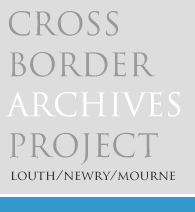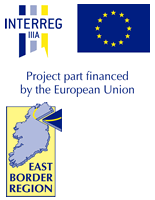Great Northern Railway
Industry and Commerce
The GNR formed a vital part of Ireland's industrial infrastructure. Its rail network serviced the important east coast seaports and this was key to its success in moving goods, livestock and mail for import and export.
Import and Export
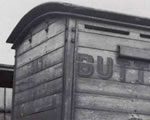
8 ton butter van No. 847
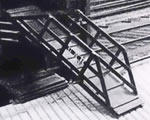
Double deck wagon for sheep or pigs
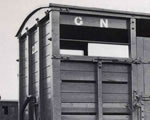
Vacuum-fitted cattle wagon
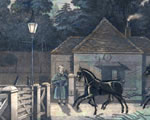
Mail coach
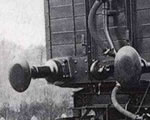
P2 parcel van No. 777
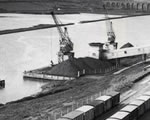
Drogheda cement factory
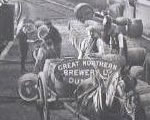
Great Northern Brewery private Siding
The Dundalk Steam Packet Company was formed in 1837. Every year its Liverpool to Dundalk service carried 23,400 tonnes of cereals, pork, dairy products, linen and flax. By the time of the First Word War (1914-1918), it was exporting livestock, eggs, butter and other agricultural products and importing bread and general merchandise from England. These goods were loaded onto waiting wagons and vans which were then pulled to provincial towns and halts all around the GNR network.
Livestock
The transport of livestock made up a substantial part of the goods traffic on Irish railways. The livestock were transported by rail to markets and fairs all over Ireland, and then to the major ports of Dublin, Belfast and Londonderry for export to England and Scotland. The movement of cattle dropped to 6,000 in 1926 and by the 1950s, with competition from road transport, livestock traffic on the GNR was in terminal decline.
Transporting the Mail
The spread of railways and the reliability of their timetables made it possible for the first time to dispatch goods for next day delivery throughout Ireland. The Steam Packet companies were an integral part of the system of distributing mail between Ireland and Britain. These factors made possible the early development of the modern postal service. Indeed, so important were their mail contracts that the railway companies planned their timetables around the needs of the Post Office.
Coal at Newry
In the 1920s Newry was a major entry port for coal. GNR's most important customer there was Joseph Fisher & Sons Ltd of Bridge Street, ship brokers and coal importers, who dispatched coal to most of the Midland counties of Ireland. Further on towards Warrenpoint was S. Lockington & Company, another coal firm which gave valuable traffic to the GNR. The GNR built coal storage at many of the major stations on the network for Lockington. This benefited the GNR as a consumer of coal for its locomotives, and gave Lockington good locations to distribute coal to private and industrial consumers.
Cement at Drogheda
The establishment of a large cement works in Drogheda in 1938 produced specialised traffic in this commodity. In 1954-5 the railway designed and built 150 wagons of 16 tons capacity exclusively for cement haulage. Twelve of these were of the hopper type for bulk traffic, and the remainder were modern covered wagons for bag traffic.
Brewing in Dundalk
Railways worked in tune with local industry as far as possible. Legislation in 1904 enabled railway companies to provide facilities for forwarding or receiving traffic from private sidings. The breweries of Dundalk benefited from this legislation. A railway siding from the GNR was run into the Macardle Moore brewery at Cambricville on the Ardee Road, and wagons containing the empty casks were shunted close to the cooperage. The casks were cleaned, refilled and dispatched again in the wagons. The Great Northern Brewery was also serviced by a private siding running the short distance from the main GNR line to the brewery.
Next page - Audio Extracts » «Previous page - GNR and its workers
- home |
- about project |
- online catalogue |
- online exhibitions |
- activities |
- oral history collection
- about us |
- contact us |
- legal |
- acknowledgements
© Cross Border Archives Project . Website design and development by morsolutions.
This project is part financed by the European Union through the Interreg IIIA Programme managed for the Special EU Programmes Body by the East Border Region Interreg IIIA Partnership.
